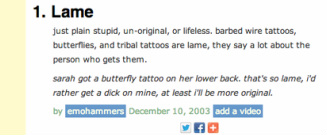

Lameness is also related to difficulties in escaping aversive encounters, and in performing behaviour such as dust bathing (Vestergaard and Sanotra, 1999), foraging, walking and preening (Weeks et al., 2000), thereby further compromising their welfare. Furthermore, lame birds may have more difficulties reaching resources in the house such as food and water (Weeks et al., 2000 Butterworth et al., 2002 Sanotra et al., 2002). Indeed, studies have shown that lame birds (gait score ⩾3) prefer food with analgesic, and that lame broilers increase their activity when given analgesics (McGeown et al., 1999 Danbury et al., 2000 Caplen et al., 2013 Hothersall et al., 2016). Lameness is associated with pain (McGeown et al., 1999), therefore representing an important welfare concern. Several studies found that 14% to 50% of broilers suffer from lameness as reflected by gait scores 3, 4 or 5 (Kestin et al., 1992 Sanotra et al., 2003 Knowles et al., 2008 de Jong et al., 2011 Bassler et al., 2013 Kittelsen et al., 2017). Lameness in broilers is usually assessed by examining the gait of individual birds using, for example, the Bristol gait scoring system, which scores from 0 (normal) to 5 (unable to walk) (Kestin et al., 1992). Although high growth rate is identified as a key factor for lameness (Julian, 1998 Kapell et al., 2012), factors such as stocking density, diseases, nutritional deficiencies, air quality, light, circadian rhythms, age, BW, genetics and management practices are also known to be associated (Julian, 1998 Sørensen et al., 2000 Williams et al., 2000 Bradshaw et al., 2002 Bessei, 2006 Knowles et al., 2008). There has been a perpetual concern for the welfare of chickens in modern broiler production, especially regarding lameness (Julian, 1998 EFSA, 2012 Kapell et al., 2012).


Further studies are needed to explore these associations in more detail. litter- and air quality) may be detrimental to leg health. Although stocking density and growth rate are already known key factors for lameness, associations of lameness with hock burns, footpad dermatitis and cleanliness of the birds suggest that a suboptimal physical environment (e.g. In conclusion, 19%of the birds showed moderate-to-severe lameness, which was associated with several production or health and welfare observations including feather cleanliness and condemnations as unfit for human consumption at slaughter. In addition, condemnations at postmortem inspection were associated with increasing gait scores ( P<0.05), indicating that at least a portion of the lameness cases display pathological changes on the carcasses. Although not statistically significant, there was a tendency for increased flock gait score being associated with wet litter ( P=0.07). Higher gait scores were associated with increased hock burn score ( P<0.02), increased footpad dermatitis score ( P<0.01), reduced bird cleanliness score ( P<0.01) and peat litter ( P<0.01). Production and other welfare data were collected for each flock after slaughter. A total of 50 flocks were included in the sample and farm visits were conducted for lameness scoring at a mean age of 28.9 days. The aim of this study was to explore lameness and the associations between lameness and health/production measures of animal welfare in commercial broiler production, using the Welfare Quality ® protocol for broilers.


 0 kommentar(er)
0 kommentar(er)
